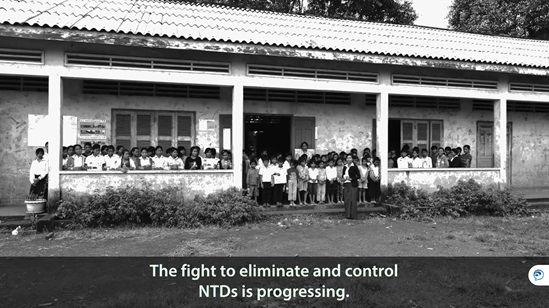Yaws (Endemic treponematoses)
Yaws is a chronic infectious disease, caused by the Treponema pallidum subspecies pertenue, which affects the skin, bone and cartilage. If left untreated, it can lead to deformities of the nose and bones of the leg. Transmission is through person-to-person contact of minor injuries. Poverty, low socio-economic conditions, and poor personal hygiene facilitate the spread of yaws. The disease is found primarily in poor communities in warm, humid, and tropical forest areas of Africa, Asia, Latin America, and the Pacific. About 75 – 80% of people affected are children under 15 years of age. The discovery in 2012 that a single, oral dose of the antibiotic azithromycin can completely cure yaws has reopened the prospects of yaws eradication.
Two countries in the Western Pacific Region, Papua New Guinea and the Solomon Islands, carry the heaviest burden of yaws in the world. In 2022, Papua New Guinea reported more than 96 000 clinical cases whereas Solomon Islands reported more than 12 000 cases. The two other countries endemic to yaws are Vanuatu and the Philippines. Vanuatu reported 690 clinical cases in 2022. The country is conducting integrated mass drug administrations to eliminate the disease. Reporting yaws cases from the Philippines is currently a challenge.
There are two stages of yaws infection. The early stage is when the patient is infectious and can spread the disease to others. In this stage, a papule (a noncancerous, outward-growing lump) develops at the site of infection. This papule is full of organisms and may persist for 3–6 months followed by natural healing. Without treatment, this is followed by disseminated skin lesions over the body. Bone pain and bone lesions may also occur.
The second stage is non-infectious and typically appears 5 years after infection. It is characterized by disabling consequences of the nose, bones, and palmar/plantar hyperkeratosis (thickening).
After a field diagnosis based on these symptoms, the disease can be confirmed by examining a sample from a skin legion under a special type of microscope (darkfield examination). Blood tests are not typically used because yaws is closely related to the bacterium that causes syphilis and the two diseases will show the same result.
There is currently no vaccine for yaws. Health education and improved personal hygiene are the most important tactics for prevention.
Two antibiotics can be used to treat yaws. A single oral dose of azithromycin (30 mg/kg, maximum 2 g) is the recommended treatment. Benzathine penicillin (single intramuscular dose) at 0.6 million units (children aged under 10 years) and 1.2 million units (people aged over 10 years) can be used for patients with suspected clinical treatment failure after azithromycin, or patients who cannot be treated with azithromycin. This treatment will result in complete clinical healing in 95% of cases but patients should be re-examined 4 weeks after receiving the antibiotics.






